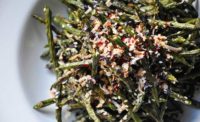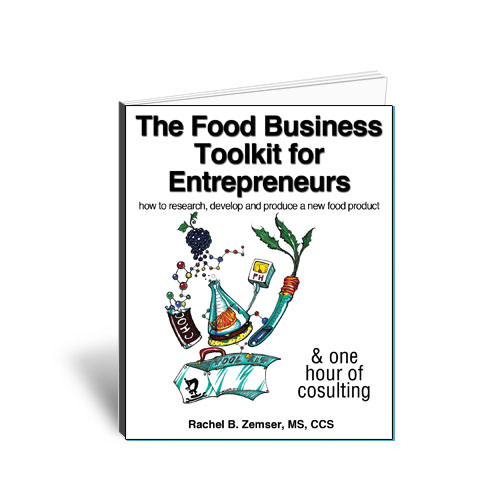Q&A: Chef Christopher Hansen, OSI Group LLC
A corporate chef’s perspective on product development

Christopher Hansen, Corporate Executive Chef, OSI Group LLC

What was once jalapeño, wasabi or cayenne is now more like a “who’s who” in the chile category, says Chef Christopher. Traditional ethnic now represents heat—heat that lasts, heat that is full of flavor and more complex, in addition to the “burn.”
SOURCE: Copyright Steve Froebe


Prepared Foods talks with Christopher Hansen, corporate executive chef at OSI Group LLC. Based in Aurora, Ill., OSI is a global processor with as many as 60 facilities in 16 countries. Its operations process prepared beef, pork and poultry items as well as sandwiches, pizza and dough-based products and kettle and smoked foods. It serves foodservice and private label customers and also provides contract manufacturing.
A 1993 graduate of the Chicago’s Le Cordon Bleu Institute of Culinary Arts, Hansen served as a corporate executive chef for flavor supplier Quest International from 1997 to 2006 prior to its purchase by Givaudan. He briefly held a similar position at Givaudan before joining OSI in 2007.
Today, Hansen is the primary liaison between OSI’s research and development teams and customers. He leads and manages new culinary concept development with research and development and creates and manages new product development for key customers.
Coming into this year, Hansen developed a special report for OSI customers, titled, “Creating Food for Today’s Customer: Food Trends and Culinary Insights 2016.” It covers consumer attitudes towards food and eight leading restaurant food and dining. OSI shared a private copy of the report with Prepared Foods for this interview.
Prepared Foods: Great job in creating such a thorough culinary trends report! What factors did you consider?
Chef Christopher Hansen: I used my own personal experiences from global travels and restaurant visits, as well as customer interactions. I also gathered up many trend reports from various sources around the industry to create the deck with some additional input from my team.
PF: This is something you share with OSI customers?
Chef Christopher: Yes. This type of information is valuable to them. They are able to see quantified data on a specific topic or set of topics, instead of just relying on opinion alone.
PF: Your report mentions ongoing demand for hot and spicy foods. How has this trend evolved?
Chef Christopher: We found Mintel data suggesting that 38% of US adults will try new menu items that offer new and unique flavors—so long as those items are authentic representations of ethnic foods. Consumers look to flavors, spices and sauces to deliver that authenticity.
What was once jalapeño, wasabi or cayenne is now more like a “who’s who” in the chile category. Traditional ethnic now represents heat—heat that lasts, heat that is full of flavor and more complex, in addition to the “burn.”
PF: How might spice or heat interests change even more in 2017?
Chef Christopher: Heat interest will continue to grow in the ethnic category. As mentioned, “Who has the hottest pepper?” will always be center stage. People are becoming more exposed to regional heat and global heat from brands they trust, as well as from reading about it in social media.
PF: What’s a new OSI offering with more kick?
Chef Christopher: We are always working on new items that catch the customer’s attention. We have worked on spicy Asian meatballs, various salsas and braised meats with a specific pepper or pepper combinations.
PF: How else do you approach flavor development? It’s more than heat, right?
Chef Christopher: Exactly. To me, new flavor development is about learning and understanding where a dish comes from. It’s asking more questions, such as, “Who’s creating it?” “What cooking techniques are being used?” and “What ingredients are selected?”
Just looking at snacking, we discovered several flavor trends. We see things like savory yogurts and spicy-salty-savory ethnic snacks and meal replacements. Bitter is gaining momentum and tart and bitter flavors can replace sugar and salt. Compound flavors are hot and we’re seeing sour replace sweet.
As I mentioned earlier, one of our opportunities simply is to develop flavors through cooking techniques.
PF: How do you work with R&D and operations to carry through your finished goal for flavor?
Chef Christopher: We all work together from the moment a project comes in, and when we’re working on new product innovation to develop concepts. We have a specific process that we follow that yields great results for our customers as well as for our team.
PF: What’s another finished new product you’re particularly proud of?
Chef Christopher: We developed a highly seasoned and flavorful sous vide chicken product that has multiple applications and can provide great menu flexibility.
PF: What were a few of your key research findings about consumers?
Chef Christopher: We see people becoming more excited about food and looking for eating adventures. Cooking is emotive and consumers are swept up in stories about food. When they eat out, they want to “get the story of the food” from the restaurants, our customers.
Consumers also are mindful about clean label, which means they’re looking for minimally processed foods with no artificial ingredients and no chemicals. Translated, our goals, therefore, are mindful food formulation as well as meaningful reformulation of existing items for ingredient transparency—all along with minimal processing.
We also can have fun with seasonal ingredients to create more seasonal limited-time offerings.
PF: As OSI’s corporate chef, how have you embraced these goals?
Chef Christopher: My approach is straight forward. I create food as if I were at home or at a restaurant. What I create in my culinary innovation center must be ready for commercialization. We take the time to understand the tools, equipment, ingredients and resources internally in order to make this happen.
PF: Does this process mean looking at new ingredients from a different perspective and/or exploring new processes, such as sous vide or high pressure processing?
Chef Christopher: New ingredients and processes are always of interest to us. We take the time to educate ourselves and our teams on what is being offered to us as far as “new.”
PF: Are you doing anything different in your work with counterparts in R&D and operations?
Chef Christopher: It is an ever-evolving process and we continue to learn. We then apply these key learnings to improve product development a little more each time. As mentioned, we work collectively on projects and rely on each team’s expertise to co-develop the best possible product.
PF: Have you changed your dialogue with OSI’s ingredient purchasing officials? Do you emphasize ingredient preferences differently now?
Chef Christopher: Yes. This is a fast-paced industry. I need to be as specific as possible when requesting information about a product or asking our suppliers about what’s possible.
PF: You work with OSI chefs worldwide. What foreign flavor trends are headed our way during the next year or so?
Chef Christopher: Ingredients now are much more regionally specific in the quest to deliver true authenticity to the consumer. Now, we’re developing products that go “deeper” rather than wider.
For example, as consumers become more familiar with Korean, Indian or Thai foods, chefs and product development teams have been given “permission” to take things a step further. We will continue to push the envelope in an effort to keep things fresh and new.
Originally appeared in the August, 2016 issue of Prepared Foods as FIRST PERSON.
Looking for a reprint of this article?
From high-res PDFs to custom plaques, order your copy today!








